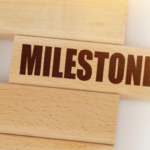

“I didn’t say it was good for you,” the king replied. “I said there was nothing like it.”
—Lewis Carroll, Through the Looking Glass
Education is an admirable thing, but it is well to remember from time to time that nothing that is worth learning can be taught.
—Oscar Wilde
How should we train rheumatology fellows today for tomorrow? As the “new” rheumatology fellowship program director at the University of Southern California (it’s interesting doing this again, having had this role much earlier in my career), I’ve been thinking a lot about the NAS. For those who may not know, this is the acronym for the “Next Accreditation System” now being implemented by the Accreditation Council for Graduate Medical Education (ACGME), which has regulatory authority for all residency and fellowship training programs.1-4 This affects us all. Certainly there is the immediate impact on training programs. Directives about our education and training, and practice, whether from the ACGME or others, are now our reality; we have long ago lost any hope of the public trusting us to meet their expectations without regulation. However, there is some opportunity for us to decide collectively how we are going to respond, such as we still can, to certain regulatory mandates as we implement them for rheumatology training. How we do so will profoundly influence the education and training of future rheumatologists, ultimately reflecting and defining our societal responsibilities as physicians—who we are and how we practice.
Let me present a short exposition of salient aspects of the NAS, followed by my thoughts about how rheumatology might approach this.
The NAS: A Very Brief Summary
The intent of the ACGME is admirable. It is to change the paradigm of training and its regulation. To be less prescriptive. To have fewer standards and standards revisions. To reduce the burden on programs. To continuously monitor outcomes and other predictive measures. To hold sponsoring institutions responsible for ongoing oversight of educational and clinical systems. To promote curricular innovation. To be constructive and supportive.
The ultimate goal is for self-study/self-regulation—for training programs to critically analyze and improve their learning environments and outcomes. This will be predicated on several essential elements. These will include having the appropriate and necessary quantitative data (metrics). There would be a culture of quality improvement, program improvement, performance improvement, and assuring safe care. Outcomes assessments (by and for patients, faculty, residents, and fellows) will be implicit. Competencies will be defined and documented. Educational/professional milestones will be developed and utilized. Entrustable professional activities will be enumerated. There will be new institutional responsibilities and accountabilities (Clinical Learning Environment Review program).


